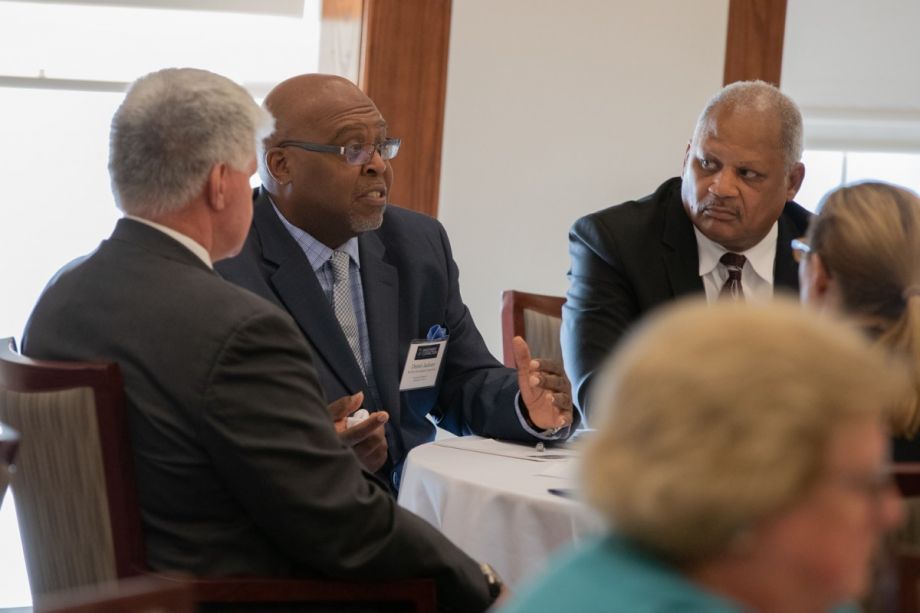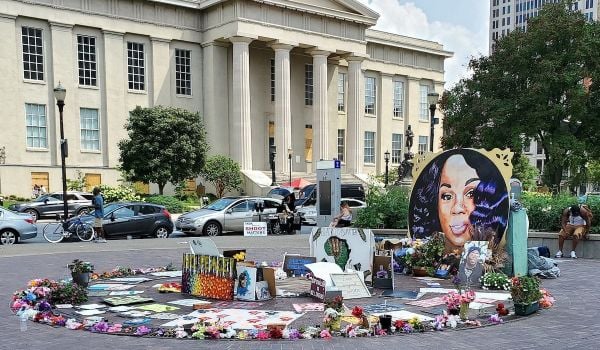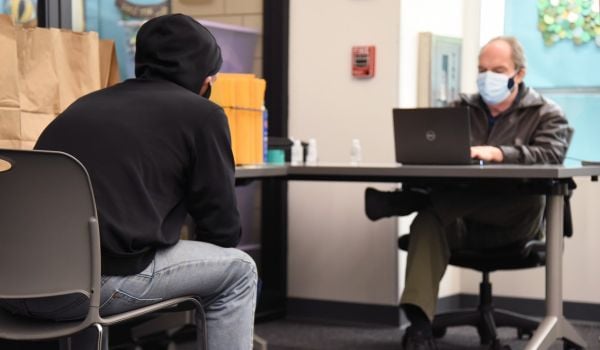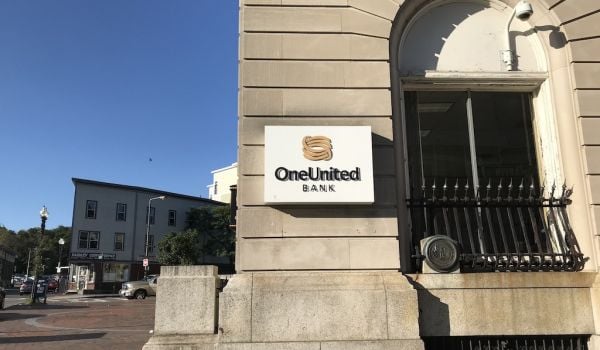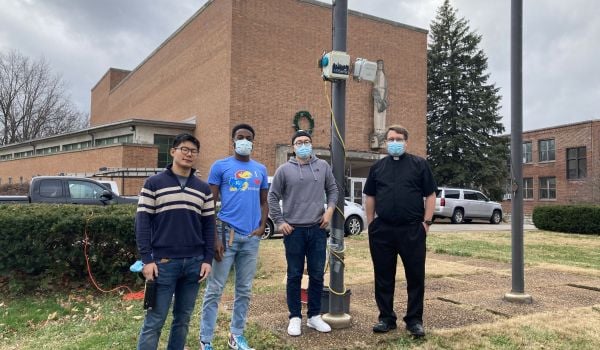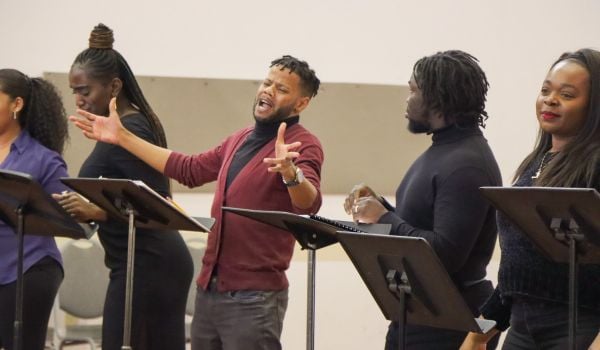The New Directions Housing Corporation (NDHC) in Louisville, Kentucky, wanted to launch a new initiative, focused on helping seniors age in place. But they were short on cash. So, when NDHC heard about the Investment Connection program run by the St. Louis Federal Reserve, it seemed like a good potential source of funding. “We were looking for support for a new program,” George Sanders, director of homeownership preservatino for NDHC, says. “Most places don’t want to fund something new. Most places want to fund something proven.”
Funders’ preference for a tested solution, Sanders says, meant NDHC was looking at knocking on a number of doors to find support for a pilot project.
The St. Louis program aims to connect banks that need to comply with Community Reinvestment Act (CRA) requirements with nonprofit organizations.
During the Carter administration, Congress passed the CRA to push financial institutions to reinvest in their communities, with an eye toward investing in low- and moderate-income communities. A few years later, each of the 12 Federal Reserve banks created a department to focus on how the Fed and local credit institutions could support community development through lending. The Kansas City Federal Reserve’s community development department ultimately came up with the idea of matchmaking between banks and nonprofits and launched Investment Connection in 2011. The St. Louis Fed, which covers a broad swath stretching across Arkansas up through eastern Missouri and across the Mississippi River to western Tennessee and Kentucky, as well as southern Illinois and Indiana, followed. Today, four Federal Reserve banks have some sort of program like Investment Connection.
At the October Investment Connection meeting in Louisville, Sanders met representatives from First Financial Bank.
“It’s huge for the bankers,” says Angela Byers, community outreach manager for First Financial Bank. “To have all of this vetted, and in three hours to get 10 investment opportunities.” Byers says it can take days for a bank’s staff to vet organizations for CRA-eligible funds. The Investment Connection program, in contrast offers bankers a chance to learn about a number of different projects, which all meet CRA criteria, all at once.
Byers also sees the program chipping away at systemic issues as well. “Having these organizations come together, it is going to help close a little bit more of the racial wealth divide that we have.”
First Financial provided a one-time grant of $25,000 to NDHC to launch a pilot of the group’s aging-in-place program. The program brings together volunteers and paid contractors to repair homes and add accessibility and mobility upgrades while also providing social-service support. The program has helped one homeowner thus far and Sanders says that NDHC is now talking with the Kentuckiana Regional Planning and Development Agency about how the program could be expanded. He also acknowledges that something similar needs to be developed for elderly renters.
It’s the kind of success the St. Louis Federal Reserve aims to facilitate. “Some people may not even know they have a homelessness problem or another issue [in their community],” says Yvonne Sparks, who works with the St. Louis Federal Reserve’s community development team. “[Investment Connection] puts people who are seldom or ever in the same room, which we think is part of the real specialness of the event,” she says.
As of February, St. Louis’ program has made 169 connections between community organizations and financial institutions. More than one million dollars have been disbursed as grants, loans and investments.
To ensure that community organizations know how to approach bankers, Sparks’ team has developed a community training component.
Often, when meeting for the first time, community-development professionals and bankers “talk past each other,” Sparks says. As a result, her team tries “to get people focused and to have a common understanding.” To do that, Sparks says, the Fed calls on bankers from institutions with strong CRA programs to participate in workshops where they can speak with community groups about what these banks look for when it comes to investing. This helps nonprofit organizations learn how to present their projects and show how they meet CRA guidelines. After this training session, Sparks says, the St. Louis Federal Reserve releases its call for proposals for the Investment Connection program.
Diego Abente of the International Institute Community Development Corporation in St. Louis praised the Federal Reserve for the way it brought nonprofits and bankers together, managed expectations and followed up after the event. He did feel, however, that having a better sense of both the “asks” his colleagues would be making and the profiles of the investors invited would help organizations prep more effectively.
“As nonprofits we think about how to make strategic asks,” Abente says. “I didn’t feel like I had a good feel for how to do that.” Abente says that one challenge he felt was the concern that organizations might be seeking similar kinds of support for similar kinds of projects.
Sanders is pleased with the outcome for NDHC.
“We would have continued to knock on doors individually one at a time, and maybe we would have found First Financial,” Sanders says. But he credits the Investment Connection program with accelerating the process. “We were able to close the deal in a period that was much shorter than we could have ever hoped for. I think it would have been another year before we could get to this stage. It took about three months.”
First Financial is also confident it’s made a good investment.
“You’ve got so many people who are literally just physically removed from their homes because they maybe don’t have ramp access. Or maybe they don’t have a walk-in shower. So, you’re not really preserving home ownership or even providing the wealth transition to their heirs,” Byers says. This made supporting NDHC, she says, a “no brainer.”
EDITOR’S NOTE: This article has been updated to provide the correct attribution for George Sanders.
This article is part of The Bottom Line, a series exploring scalable solutions for problems related to affordability, inclusive economic growth and access to capital. Click here to subscribe to our Bottom Line newsletter.
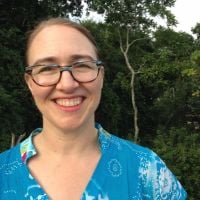
Zoe Sullivan is a multimedia journalist and visual artist with experience on the U.S. Gulf Coast, Argentina, Brazil, and Kenya. Her radio work has appeared on outlets such as BBC, Marketplace, Radio France International, Free Speech Radio News and DW. Her writing has appeared on outlets such as The Guardian, Al Jazeera America and The Crisis.
Follow Zoe .(JavaScript must be enabled to view this email address)



